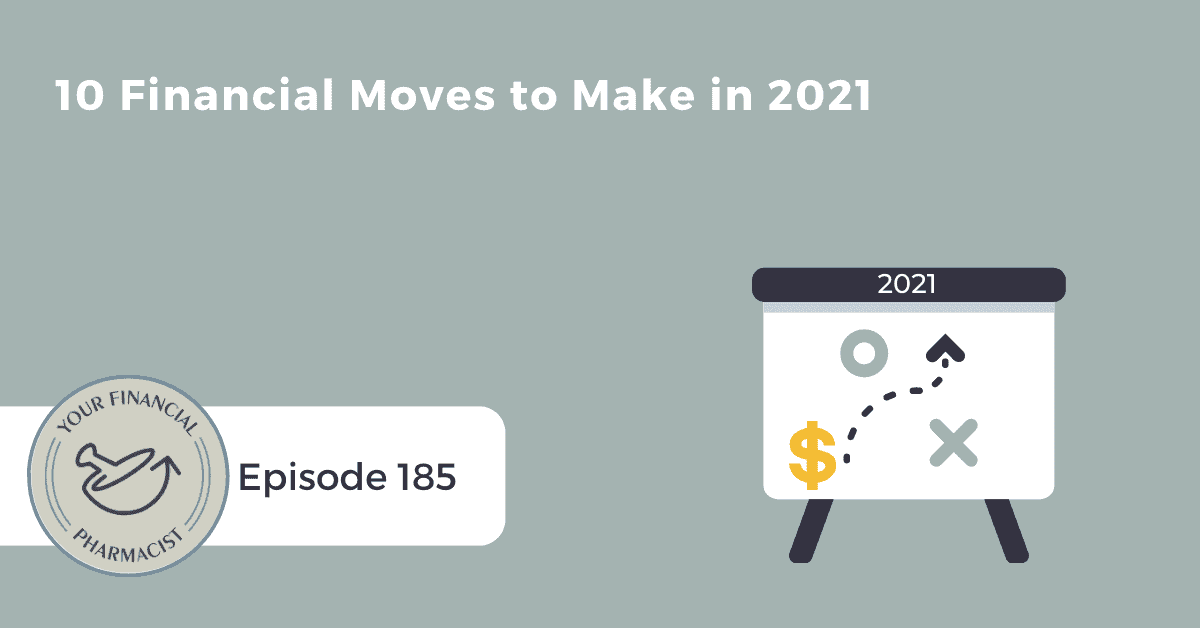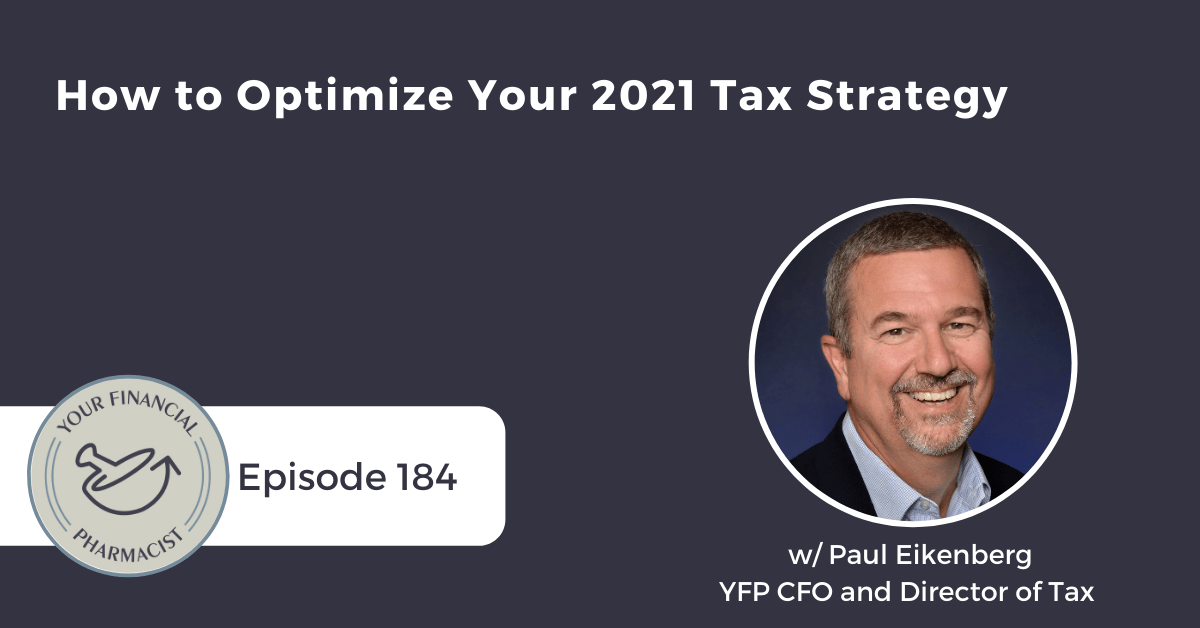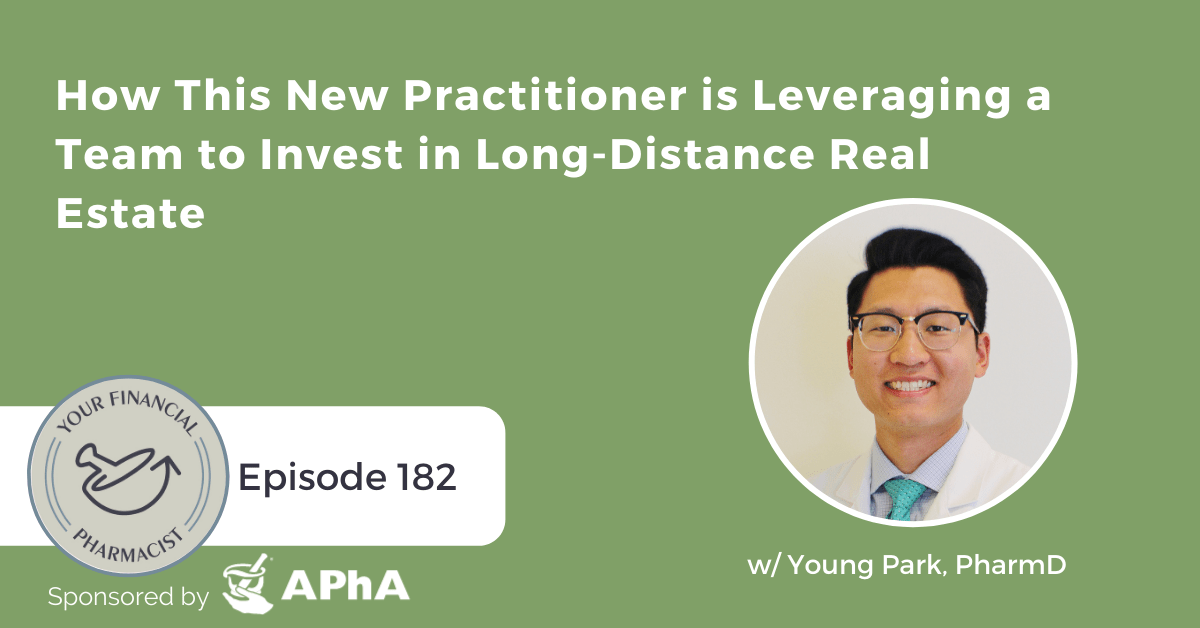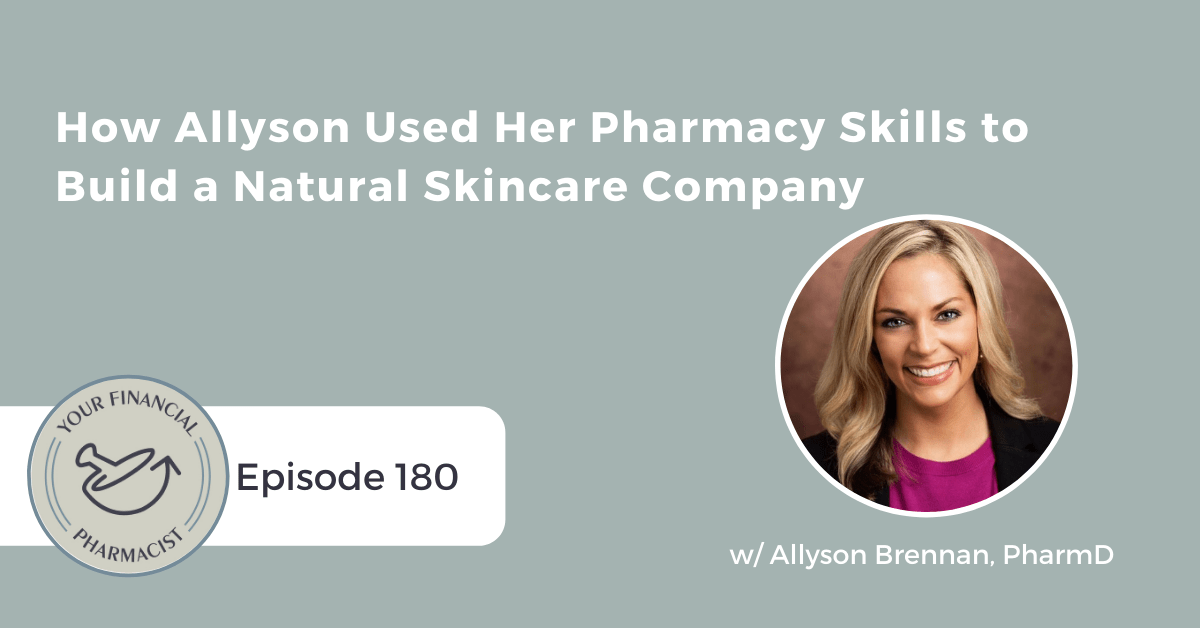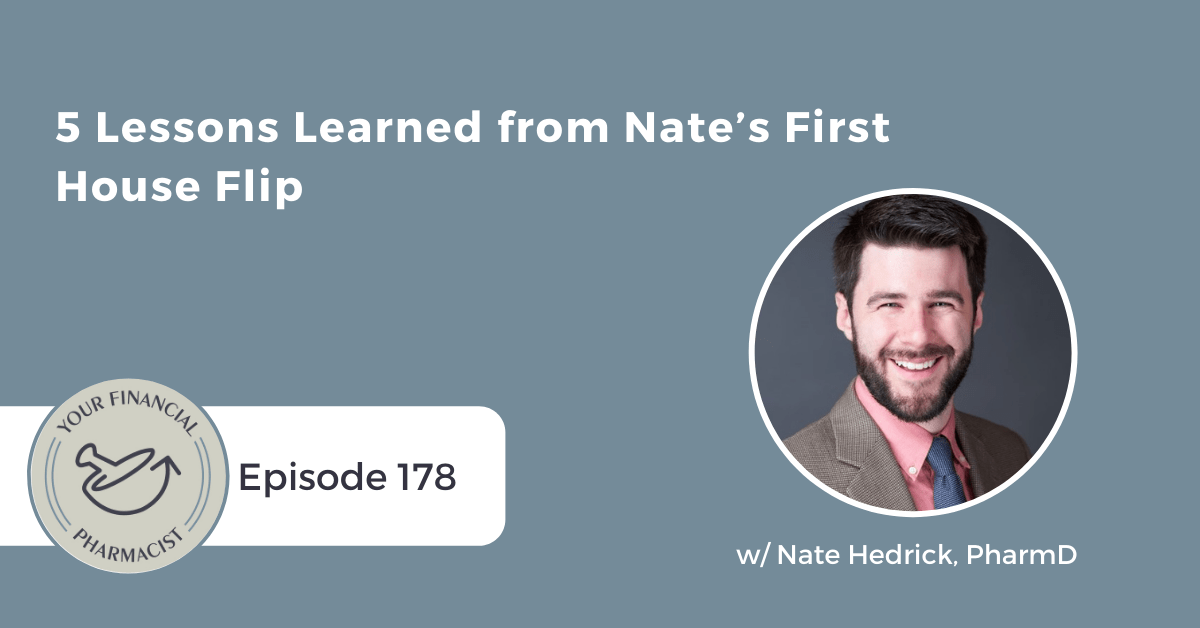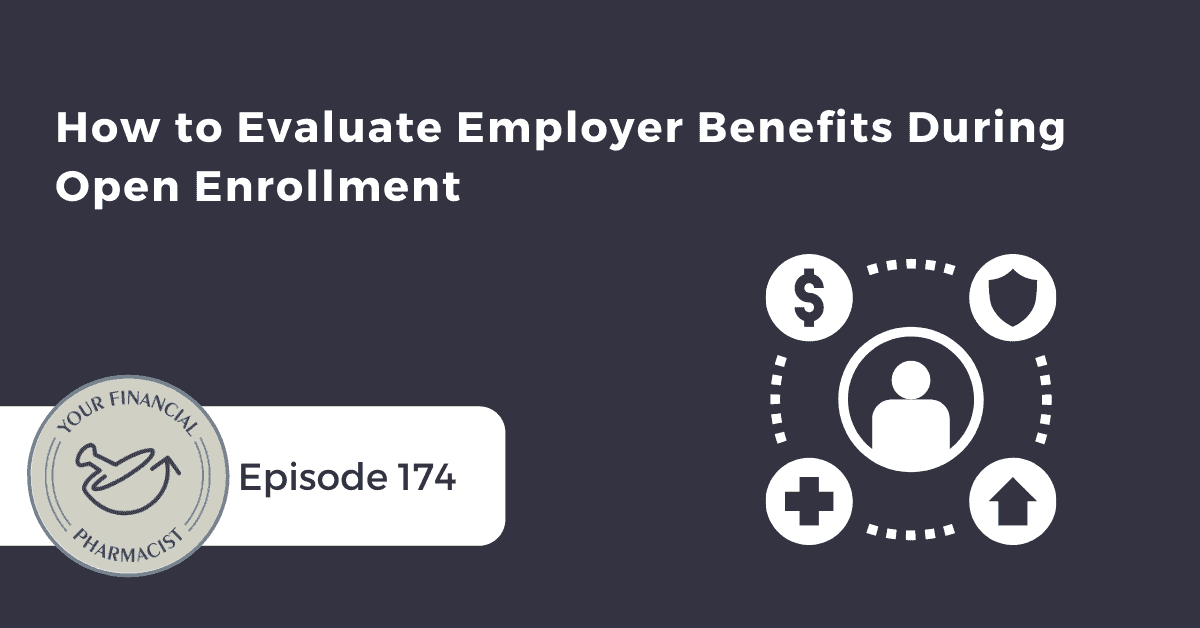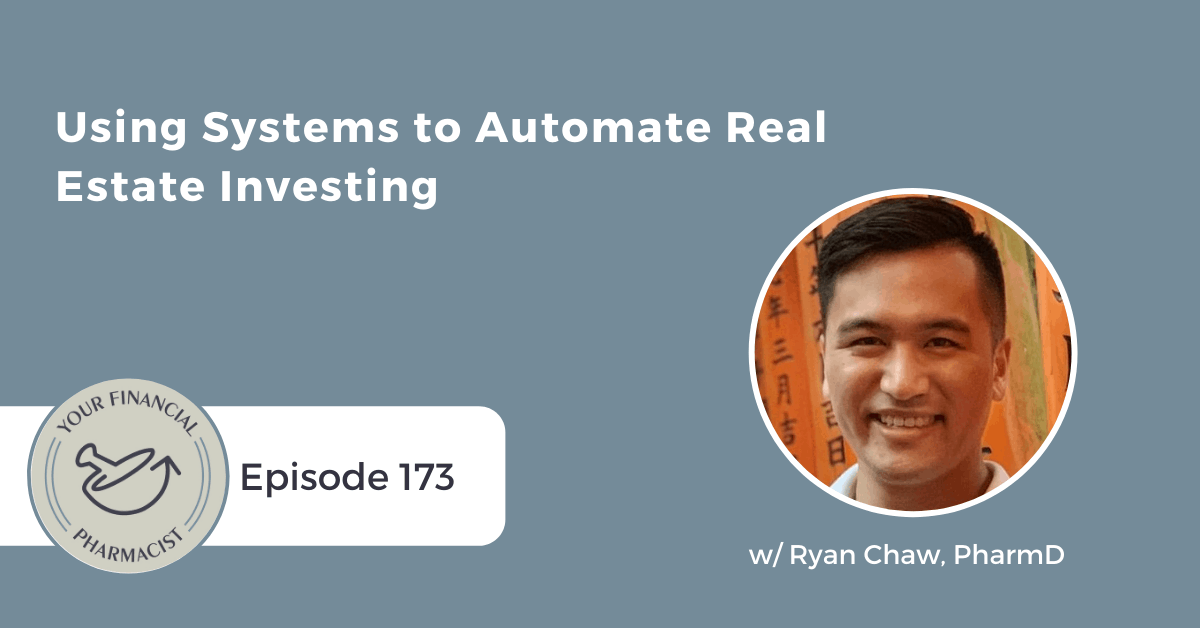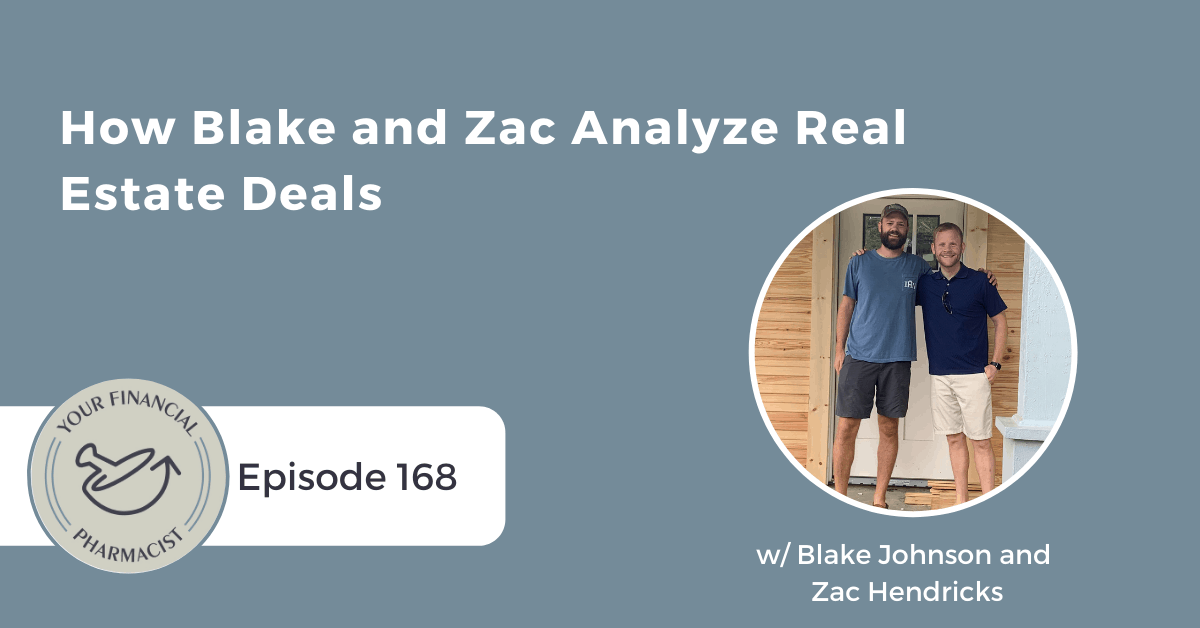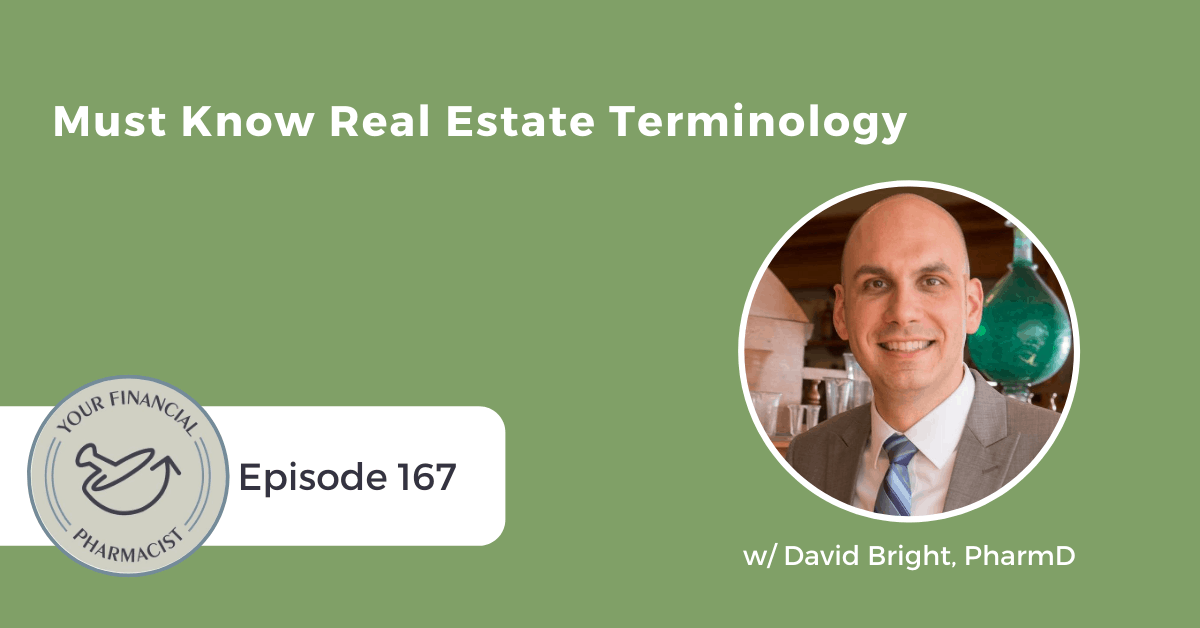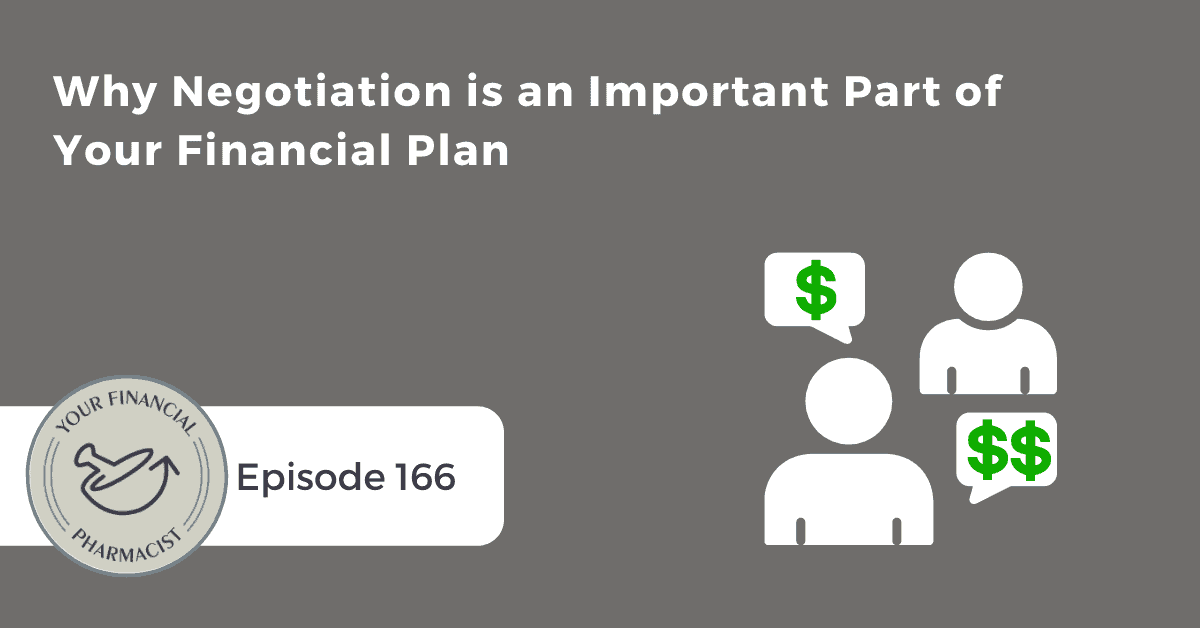10 Financial Moves to Make in 2021
Tim Ulbrich talks through 10 financial moves to make in 2021. It’s time to turn the page on 2020 and start 2021 off the right way and that’s with an intentional plan.
Summary
The start of a new year brings an opportunity to reflect, reset, and start fresh. It’s also an incredible time to dig into your finances and become really intentional with your 2021 financial plan. Tim Ulbrich talks through 10 financial moves you should consider in 2021 and how to make them happen.
Here are the 10 financial moves you should consider for 2021:
- Simplify and clarify your goals for the year
- Revisit the big questions and discussions with your spouse
- Take advantage of any low hanging fruit to get a win or two and gain some momentum
- Put your goals on automatic…and get out of the way!
- Revisit your student loan game plan
- Take your tax strategy to the next level
- Button up the insurance part of your financial plan
- Evaluate where real estate may or may not fit into your financial plan and goals
- Update your legacy folder
- Set your learning plan
- BONUS: Find a community and get a coach for accountability and guidance
Mentioned on the Show
- YFP Planning: Financial Planning for Pharmacists
- Join the YFP Facebook Group
- YNAB.
- Your Best Year Ever by Michael Hyatt
- 10 Financial Discussions Every Couple Should Have
- YFP 165: The Power of a Health Savings Account
- I Will Teach You To Be Rich by Ramit Sethi
- YFP 057: The Power of Automating Your Financial Plan
- Your Financial Pharmacist Blog
- Use Coupon Code ‘YFP’ for 15% Off: The Pharmacist’s Guide to Conquering Student Loans by Tim Church, PharmD
- YFP 184: How to Optimize Your 2021 Tax Strategy
- File Your Taxes with Your Financial Pharmacist
- YFP 044: How to Determine Your Life Insurance Needs
- YFP 045: How to Determine Your Disability Insurance Needs
- YFP 155: Why You Need Liability Insurance
- Protect Your Income with Life and Disability Insurance
- YFP 173: Using Systems to Automate Real Estate Investing w/ Ryan Chaw
- YFP 178: 5 Lessons Learned from Nate’s First House Flip w/ Nate Hedrick
- YFP 182: How This New Practitioner is Leveraging a Team to Invest in Long-Distance Real Estate w/ Young Park
- Bigger Pockets
- Bigger Pockets Real Estate Investing Forums
- Bigger Pockets Real Estate Podcast
- The Bigger Pockets Blog
- ABC’s of Real Estate Investing by Ken McElroy
- Dave Ramsey’s Financial Peace University
- Rich Dad Poor Dad: What the Rich Teach Their Kids About Money That the Poor and Middle Class Do Not! by Robert T. Kiyosaki
- The Millionaire Next Door: The Surprising Secrets of America’s Wealthy by Thomas J. Stanley and William D. Danko
- The Automatic Millionaire: A Powerful One-Step Plan to Live and Finish Rich by David Bach
- Tax-Free Wealth: How to Build Massive Wealth by Permanently Lowering Your Taxes by Tom Wheelwright
- The Truth About Money by Ric Edelman
- The Compound Effect: Jumpstart Your Income, Your Life, Your Success by Darren Hardy
- The Behavioral Investor by Daniel Crosby
- Happy Money: The Science of Happier Spending by Elizabeth Dunn and Dr. Michael Norton
- YFP Planning: Financial Planning for Pharmacists
- Book a Free Discovery Call with YFP Planning
- YFP 181: How YFP is Different Than Most Financial Planning Firms
Episode Transcript
Tim Ulbrich: Hey, what’s up, everybody? Tim Ulbrich here, and excited to turn the page on the New Year. Here we are, 2021, hard to believe we’re at the start of the new year. And we know that 2020 was a hard year for many, and I’m hopeful that 2021 brings a better year for everyone.
OK, let’s do this. 10 financial moves to consider for 2021. And spoiler alert: I’ve actually got 11, so we’ll have a bonus one at the end. Now, we know every new year, it’s a chance to turn the page, a chance to reset, and yes, it’s just an artificial point in time, a day that is really no different than any other day except obviously for tax reasons and of course, if something is changing at the 1st of the year, whether that be compensation or benefits. But regardless, those aside, it’s an opportunity to turn the page and let’s take advantage of the opportunity to reset. Now, perhaps resetting means that you’re someone who’s on track and it’s just reminding yourself of the plan that you have in place and celebrating the success and the wins that you’ve had thus far and wanting to keep that momentum going forward. Or perhaps the new year means that you feel like you’re not on track. Maybe you’ve got a plan or a plan that you need to dust off, and it’s a chance or an opportunity to reset course and to recorrect for the new year. Or perhaps you don’t have a plan, and it’s time to get one in place and it’s a time to evaluate what are the different parts of the financial plan and considering all of the things that are out there, what are the low-hanging fruit and what are the areas that you can begin to get some momentum on to be able to have longer term success as it relates to your finances?
So No. 1 — as we go to this list towards 10 financial moves to consider for 2021 — No. 1: Simplify and Clarify Your Goals for the New Year. Now, notice I didn’t say set your goals as I suspect that many of you are already doing that. We talk about that on the show all the time, the importance of having an intentional plan heading into the new year or just in general, an intentional plan as it relates to finances to know your compass and know where you are going. So rather, what I’m referring to here is bringing them into focus and getting specific with those goals to make sure that you’re laser-focused on how you’re going to achieve those. So we know, I know, you know, that there are lots of competing financial priorities, regardless of the stage that you are at within your financial plan. So perhaps you’re somebody who’s listening that has been out of school for a decade or more and you’ve worked through maybe the student loan debt that you’ve had, you’ve paid that off and you’re kind of on a next evolution or phase of your financial plan. There’s lots of competing priorities, even after getting rid of those pesky student loans. Or perhaps you’re someone who is a recent graduate or a student that’s listening and you’re trying to figure out, OK, I’ve got this behemoth of my student loans, and how do I begin to think about other things as I also face what is, of course, this big priority that’s right in front of me? Or perhaps you’re someone who’s nearing the retirement age or you’re in the latter part of your career and you’re trying to identify, OK, I’ve done all of this work, I’ve put these things into place and I want to make sure I go into this next phase of my career, next phase of my financial plan, and I do that in a way that is intentional and I do that in a way that is efficient to make sure I achieve the goals that I want to achieve and of course, lots of tax and other considerations that are there as well. So regardless of the stage that you’re in, whether it’s mid-career, end of career, new career, there are lots of competing priorities. And I’m convinced that the priorities, you know, don’t go away. But it’s a matter of how you can identify those and prioritize those to make sure you’re intentional with what you’re trying to achieve in any given period of time. And here, of course, we’re talking about heading into the new year. So if you haven’t already done so, put them down on paper. And my encouragement for you is to leave this to just a few financial goals that you want to make sure that you prioritize and achieve for the year. So I’m going to encourage three goals and that you write them in a way that provides you with the best opportunity to achieve that goal. So making sure you’re specific about the what of the goal, the when you want to achieve that goal by, and the why — what’s the purpose, why does that matter in terms of the rest of your financial plan and why is this specific goal important?
So let me give you an example here. If I were to say, you know, “Beginning Feb. 1, I’m going to allocate an additional $200 per month towards a Roth IRA so that I can grow my long-term savings in a way that aligns with my retirement goals or plan.” So when I get that specific with a what, with a when and a why — so here, we’re talking about what are we doing: an additional $200 per month towards a Roth IRA. When: by Feb. 1. Alright, how does that look in the budget? Now I’ve got an idea of when and how much. Why? So that I can make sure I’m achieving my long-term savings goals. That is a goal that we’re likely or increased likelihood of achieving because we’re getting specific and we can look at the rest of our financial plan to determine whether or not that is feasible and whether or not that is realistic.
Now, before you set your goals, you’ve heard us say this on the show before, you have to be clear on the why, the so what, the purpose. And we’ve talked about why finding your financial why is so important. And you know, really, what we’re trying to answer here is the question of why does this topic of money even matter to you? Or why does this specific goal and achieving this specific goal even matter? Why is this important? Why is this relevant? And that sounds like a relatively simple question, but if you have thought about this in depth before, you know that it is not. This is the “So what?” question. So before you get too deep into the x’s and o’s of any one part of the financial plan, whether that’s debt repayment, whether that’s investing or savings or insurance, whatever that would be, we have to first understand what we’re trying to achieve. And we talk a lot about our vision at YFP of helping pharmacists on their path towards achieving financial freedom. And my challenge to you is what does that concept, what does that term of financial freedom mean for you? There’s no one right answer. And that can certainly — will be certainly different for many folks that are listening to this episode.
So what’s the goal? So a few ideas to get things stirred up, hopefully to get you thinking about this topic a little bit more. I’ve talked with many pharmacists that say, “You know, when I hear financial freedom, I think about flexibility. I think about options of working or perhaps having the choice to work or how much I work or when I work. Even if I really enjoy the work I do.” Or perhaps it’s to be in a position of control with how you’re spending your time or your money. Perhaps it’s to be able to give, to be philanthropic. Perhaps it’s to leave a legacy or to travel without worry or stress or regret. Perhaps it’s to help family members or friends that are in need or be in a position to do that or to start a business or a movement or a foundation or a charity. You get the point. It’s the financial why, it’s the purpose, and that’s really going to help drive the rest of our financial plan. So that’s No. 1, Simplify and Clarify Your Goals. Set three financial goals for the new year. And then the background of those goals should be the purpose, the vision, the why of your financial plan such that if you achieve those goals, you’re one step closer to achieving your financial why.
No. 2, Revisit the Big Questions or Discussions with Your Spouse if this, of course, applicable to you and your personal situation. Could be a significant other as well. Now, I wrote a blog post way back when several years ago titled, “10 Financial Discussions that I Believe Every Couple Should Have.” And we’ll link to that blog post in the show notes. And you know, these are questions such as when you’re balancing financial priorities or making decisions, of all of the financial priorities you have to consider, whether that’s giving, saving for retirement, housing, transportation, paying off debt, and so on, do you and your spouse or significant other agree upon a plan for how you will balance these? How will you prioritize them? How will you fund those goals, in what order and when? Will you be focusing on several at once or just one at a time before moving on to another one? That’s an example of a big question or discussion to have. Another one, for example, might be around giving. How does each individual feel about giving? How much and where? How will this be budgeted for? Another one might be around the level of engagement. Is one individual taking the lead more than the other when it comes to managing the finances? If so, are both individuals aware of the overall financial situation? How do you talk about this topic? How do you communicate this topic? Are there shared accounts, individual accounts? So I’m just scratching the surface here, and I’ll reference you to that post. But my encouragement would be to look at these and maybe several of these you have had, maybe some you need to revisit, some you haven’t had. But the challenge here in No. 2 is to go back and revisit, discuss, rediscuss these questions with your significant other or your spouse with the understanding that the answers to these are of course going to be significant and inform the direction that you take with many parts of the financial plan.
No. 3, Take Advantage of Any Low-Hanging Fruit so that you can get a win or two and get some momentum early on in the year. Now, again, regardless of where you are at in the stage of your career or your financial plan, I think this is a very important concept for us all to consider. Is there any low-hanging fruit that we can get a quick win or two, get some momentum, so that we’re encouraged and motivated and want to be going on with achieving the other perhaps more audacious or bigger goals that we have set out for the year. So things that come to mind here, things that I evaluated myself in 2020, these could be shopping around auto or home insurance or have you looked at this in a while? If not, good chance to understand your coverage, shop these around, see if there’s any you can save without giving up on the quality of those coverages and policies. Perhaps you’re someone who has wanted to get a term life insurance policy in place or that is a need and it fits with your plan but for whatever reason, you haven’t done that. Relatively inexpensive, we’ll talk about insurance here a little bit in a few moments. Maybe it’s refinancing a mortgage. You know, I’m sure you all heard and read about where rates have gone in 2020, certainly probably into 2021, through the pandemic. And perhaps for whatever reason, you haven’t evaluated that. Is that something to consider? Are there any recurring bills that perhaps you’re not aware of or maybe have lost track of or bills that have gone up over time that you might be able to take a fresh look at and negotiate, things like cable and other services. Are you eligible for HSA savings? And we talked about this in episode 165, The Power of a Health Savings Account. But this is an example of a tax-advantaged account where there’s great benefits, the dollars aren’t enormous, but again, perhaps this small victory, this quick win, this low-hanging fruit that can help accelerate the rest of your financial plan. So do any of these resonate? Or are there any others that you would identify of things that you’ve been meaning to do that you know what needs to be done and you want to just take that next step and knock it out and to continue the momentum with other goals in 2021.
No. 4, Put Your Goals on Automatic and Get Yourself Out of the Way. Now, one of my favorite books, I’ve talked about it on the show many times, “I Will Teach You to Be Rich” by Ramit Sethi, he talks about this concept of automation, automation, automation. He goes through great examples of how to do it. We’ve also talked about it on this show, Episode 057, The Power of Automating Your Financial Plan. But the concept is simple: Once you set your financial goals, when your paycheck comes in, you have a system in place so that your goals are being funded right away and that you have a budget behind that to know that you’re not going to be putting yourself in a position where you’re overspending your income each and every month. Now, for those of you that have been doing this for some time, I think this concept of automation is also very important. It’s this concept of prioritizing your goals, paying yourself first rather than hoping you have money left over. And so perhaps it’s revisiting those goals, revisiting the amounts, the timeline, when do you want to achieve those, and building the systems — again, Ramit talks about that in “I Will Teach You to Be Rich,” we talked about it on Episode 057, how to build the systems so that once you get paid, once you have the goals, you’re automatically funding those accounts such that you are essentially assuring — hopefully — that you’re going to achieve those and behaviorally getting yourself out of the way, which often we individually are the biggest barrier to achieving our financial plan. So that’s No. 4, Put Your Goals on Automatic and Get Yourself Out of the Way.
No. 5, Revisit Your Student Loan Game Plan. Now, here we are at the beginning of 2021, ready to turn the page on a new administration in terms of the President and the President’s team, which may or may not bring additional changes around student loans. We don’t know that yet. But what we know of the first of the year, is that we know that the most recent stimulus package that was passed at the end of 2020 did not extend the administrative forbearance on qualifying federal loans that has frozen for the last nine months or so the interest that was due and any payments that were required on those loans. So it’s really been an incredible time period for those that have qualifying federal loans. For good reasons, payments were not due and interest was not accruing on those qualifying federal loans. So what’s going to come next? We don’t know. There’s been lots of hypotheses that have been thrown out there. There’s been several proposals that have been mentioned throughout the presidential debates and leading up to the election. But we don’t know. As of early January 2021, we don’t know what’s going to happen. Now, we do know that if nothing else happens at this point in time, this administrative forbearance is going to expire. But perhaps this could be continued through an executive order, perhaps there’s additional policies and legislation coming into the future. But we don’t know. So my point here is this is the time period, throughout the month of January, to take advantage of this administrative forbearance as long as it lasts — and if it goes on longer, great. If it doesn’t, you’re ready to go. Take advantage of this time period to come up with your student loan repayment plan or to evaluate or re-evaluate your options to make sure that you’ve got the plan in place that’s going to be the best fit for your personal situation. And we talked about this at length on several other episodes, we’ve got lots of resources on the blog, we’ve got, of course, one of our latest books, “The Pharmacist’s Guide to Conquering Student Loans,” which talks about A-Z student loan repayment for pharmacists. And you can get a copy of that book at PharmDloans.com, and if you use the coupon code “YFP,” that will get you 15% off. So this is the time period to take advantage of this administrative forbearance, as long as it lasts, understand and evaluate all your options, and be ready to go such that when this time period is done, you’re ready to hit the ground running with an intentional student loan repayment plan. Now, for those that don’t have student loans or paid them off, happy dance, right? We’re excited that we’re at this point in time, but perhaps this is also an opportunity to pay it forward and help those that are in this situation — it can be very overwhelming — through providing your input, your experience, maybe getting them a copy of a book like the “Pharmacist’s Guide to Conquering Student Loans,” or pointing them in the direction of some resources that could be helpful to them, things that you’ve learned through your journey, mentoring other folks, but an opportunity to pay it forward to those that are dealing with student loans and typically six figures or more of student loans front and center as they’re trying to attack this and come up with a plan in 2021. So that’s No. 5, Revisit Your Student Loan Game Plan.
No. 6 is Take Your Tax Strategy to the Next Level. Now, Episode 184, just last week, we talked about how to optimize your tax strategy. I brought on YFP Director of Tax and our CFO Paul Eikenberg, who’s our tax professional at YFP. And we talked about the difference between tax planning and preparation, a very important difference. We talked about tax planning mistakes that he sees, we talked about strategies that pharmacists should consider employing to optimize their tax situation. We talked about strategies around legal tax avoidance, tax deferment, and then opportunities to take advantage of those accounts and strategies where you can have tax-free gains. And we broke down each one of these strategies and ones to consider, and so go back and listen to Episode 184 if you didn’t catch that over the holidays. And this is the chance — if you have been someone that has perhaps had your tax filing on automatic and haven’t really thought about understanding all of the different options being a little bit more strategic with OK, now that we’ve completed the filing, what should we be thinking about for the next year in terms of more of a strategic tax plan? Perhaps this is the year where you look at bringing somebody into your financial plan that can really help you be more intentional with your tax strategy. So Paul, as I mentioned, leads our tax planning and preparation services for clients of YFP Planning. And this year, we’re excited to make that service available to 50 more households. And so you can learn more about the tax planning and preparation services that we’re offering and secure your spot by visiting YourFinancialPharmacist.com/filemytaxes. Again, don’t wait. We’re capping this opportunity at 50 pharmacist households. So first come, first served. Again, that’s YourFinancialPharmacist.com/filemytaxes.
No. 7, Button Up the Insurance Part of Your Financial Plan. This is the defensive part of the financial plan. Now, there’s lots of insurance to think about, right? Health, auto, home, renters — but here, I’m really specifically talking about life, disability and professional liability. And this is a part of the plan that I think often gets overlooked because it can be overwhelming to understand what one does or does not need. It can be perhaps not necessarily very exciting, right, to spend money on things that may or may not happen when you look at other priorities such as paying off student loans or investing or saving for the future. So my encouragement is learn first, shop second, and buy last. So first, determine what you do need, what you don’t need. So what does your employer offer? What do they not offer? Where are there gaps? What types of coverage do you need based on your personal situation. We talk about this at length on Episode 044. We talked about how to determine life insurance needs, Episode 045. How to determine disability insurance needs in Episode 155, why you need liability insurance and there of course, talking about professional liability. So learn first, spend time, dig in, understand life, disability, professional liability, understand the nuances of those policies. Shop second. Find an independent broker, and we’ve got some resources on the YFP site that can help you shop the market of what you do and do not need after you evaluate what you do or do not have from your employer, what other coverage do you need, what gaps exist? And then finally, buy last once you’re confident in what you need and the options that are out there.
No. 8, Evaluate Where Real Estate May or May Not Fit into Your Financial Plan and fit into your long-term financial goals. Now, I’ve said this before that as we focused on more real estate on this show in 2020, we’ll be doing much of that in 2021 as well, I’m not suggesting that real estate is for everyone. But I do have a sense that for many pharmacists, evaluating real estate investing — and there’s a lot of different ways to get there — is something that folks are interested in, encouraged in for a variety of reasons, and maybe have been on the fence about should I look at doing real estate investing? Is this a part of the financial plan that makes sense based on a lot of different factors? So looking at the risks, the rewards, what’s the goal? What’s the point? Why do I want to invest in real estate? What’s the point of perhaps generating additional cash flow each month? How might you get involved? Or how involved do you want to be or not involved? Do you want this to be more passive? Do you want it to be more active? Do you have opportunities in your area? Would it be outside of your area? Are there mentors or resources in your community that can help you? And so we have — as I mentioned — featured several stories in 2020, a few that come to mind, Episode 173, Ryan Shaw, all these pharmacists, Ryan Shaw talked about the systems that he has in place for the investing that he does. Episode 178, Nate Hedrick, our real estate expert, talked about his experience flipping a home up in Michigan. Episode 182, Young Park talked about his experience with long-distance real estate investing, lives in Hawaii, invests primarily in Kansas City, and how he has developed systems and how he has built the beginnings of his real estate portfolio. So I recommend you check out those episodes and really determining what your plan is in 2021 if you feel like real estate investing is a good fit. What’s the plan for 2021? Is it learning more? Is it making a move on a property? Is it finding a mentor? Is it more than one of those? So make sure to tune in here, more to come in 2021. We’re going to have more episodes, more content focused on real estate investing. We’re going to be launching a real estate regular show, regular podcast on this YFP podcast. We’ll have more information coming about that throughout the month of January and February. And we’re going to continue to build out more resources for those that are looking to learn more as well as engage and connect with other pharmacist real estate investors. Now, of course another great place to learn — as I’m sure many of you have already heard of when it comes to real estate — Bigger Pockets has great content, great resources, they’ve got forums, the podcast, the blog. And one of my favorite books for those looking to get started, “The ABCs of Real Estate Investing” they published as a book. So lots of places to go here. No. 8, Evaluate Where Real Estate May or May Not Fit into Your Financial Plan and Goals and determine where you’re going to take action as it relates to this goal.
No. 9 is Update Your Legacy Folder. Now, we talked about this. It’s been awhile, but way back when, early on in the show, we talked about this concept of a legacy folder. And I think as we turn the page on 2020, heading into 2021, this is a good time to make sure that you’re updating your systems and your files and you’re making sure that what you have in place is most up-to-date and relevant information. So I first heard of the idea of a legacy folder when taking Dave Ramsey’s Financial Peace University through a local church several years ago. And I remember walking away thinking, wow, so obvious yet so important and at the time was something that I hadn’t yet implemented for our own family and our own financial plan. And essentially, the idea of a legacy folder, whether it’s physical, electronic, or both, is a place where you have all of your financial-related documents so in the event of an emergency, others would be able to quickly assess your financial situation and get access to all of the documents and accounts that pertain to your finances. So examples of items here could include things like insurance policies, wills and power of attorney, account information for savings or debt or could be mortgages, could be credit cards, could be student loans, various savings accounts you have, whether that’s brokerage accounts, retirement accounts and so on. Essentially, a one-stop shop for all of your financial documents and making sure those that should have access or could have access or would need to have access know where that information is and how they can get ahold of it in the event of an emergency happening. Of course, you’ve got to think about security and how you secure that information, whether that’s physical, electronic, or both. So that’s No. 9, Updating Your Legacy Folder.
No. 10 is Setting Your Learning Plan when it comes to personal finance for 2021. Now, at YFP, one of our core values for our team is encourage growth and development. And we believe that for ourselves, for our team, and for you, the YFP community, this concept of constantly growing, learning and developing needs to be at the front and center of one’s financial plan, regardless of where you are at on this journey. Right? There’s always something to learn on this topic. So podcasts, lots that are out there, of course, this one. We hope you’ll tune in. I mentioned the Bigger Pockets podcast, there’s other personal finance podcasts and some resources. When it comes to books, of course there’s the classics: “Rich Dad Poor Dad,” “Millionaire Next Door,” other books that come to mind as some of my favorite personal finance books: “The Automatic Millionaire” by David Bach, “Tax-Free Wealth” by Tom Wheelwright, “The Truth About Money” by Ric Edelman, “The Compound Effect” by Darren Hardy, “The Behavioral Investor” by Daniel Crosby, and one that I recently read that’s not as well known, “Happy Money: The science of happier spending,” written by Elizabeth Dunn and Michael Norton is a great resource, not on the x’s and o’s of the financial plan but more on when it comes to how we use our money, what are some of the things where when we think about our why and our purpose and driving value and happiness, how can money be used as a tool? And what does the science really have to say in that area? So set your plan, look at the options. There’s many out there. I’m sure the YFP Facebook group would have other suggestions as well. And set your learning plan for the year and be intentional about making that a priority in 2021.
No. 11, as I mentioned, I had a bonus here. No. 11 is Find a Community and Get a Coach for both accountability and guidance. Now, when it comes to the community aspect, I hope if you’re not already, you’ll be a part of the YFP Facebook group. I think this is a great community that is really encouraging in some regard, mentoring, helping one another on their path towards achieving financial freedom. I think we’re now a community of about 8,000 strong pharmacy professionals all across the country, so hope you’ll join us. And in terms of getting a coach, we really believe one-on-one comprehensive financial planning is what leads to the greatest accountability and the customization of all of these topics that we’re talking about to one’s individual situations. And so I think this derives the greatest results for the obvious reasons of it’s one-on-one, it’s intentional, it’s consistent, it has accountability, it’s specific to your goals and your plan. But we recognize that it may not be for everyone for a variety of reasons. But if you’re not yet already aware or participating in our comprehensive financial planning one-on-one services, you can schedule a discovery call today, no obligations, see if it’s a good fit for you, a good fit for us. And you can do that by going to YFPPlanning.com, click on “Schedule a Discovery Call,” and we’ll get you on the calendar here in the next month. We also talked about in Episode 181, for those of you that are thinking about is a financial planner a good fit, we talked about many of the topics of financial planning of what we do at YFP but also what are important to look at in general? Fee-only, fiduciary, comprehensive, making sure you’re finding the good fit of financial planning services that are specific to your individual needs. And that was Episode 181.
So there you have it, 10 financial moves to make for 2021 or to consider, plus one in terms of the bonus of finding a community and a coach for accountability and guidance. And speaking of that community, as I mentioned in the introduction, we’ve got an awesome giveaway to go along with this episode to kick off the new year. I mentioned how important it was for my own financial plan and journey to find good resources. And we’re excited to be sharing those with the YFP community. And so we’re going to be doing that through a giveaway in this early part of January where we’re giving two winners in the YFP Facebook group a one-year YNAB subscription, a pair of Apple Airpods, and a copy of “Your Best Year Ever” by Michael Hyatt. So two individuals will win each of those three things. And to enter, you have to be a part of the YFP Facebook group and then comment with your 2021 financial goal on the giveaway post at the top of the group.
So let’s have a great 2021. Let’s approach this year with intention, with purpose. I hope you’ll share your goals, your success, your wins, your questions, with the community in the YFP Facebook group. And as always, if you liked what you heard on this week’s episode of the Your Financial Pharmacist podcast, please do us a favor and leave a rating and review on Apple podcasts or wherever you listen to the show each and every week. Have a great rest of your day, and here’s to an awesome 2021.
Current Student Loan Refinance Offers
[wptb id="15454" not found ]Recent Posts
[pt_view id=”f651872qnv”]

